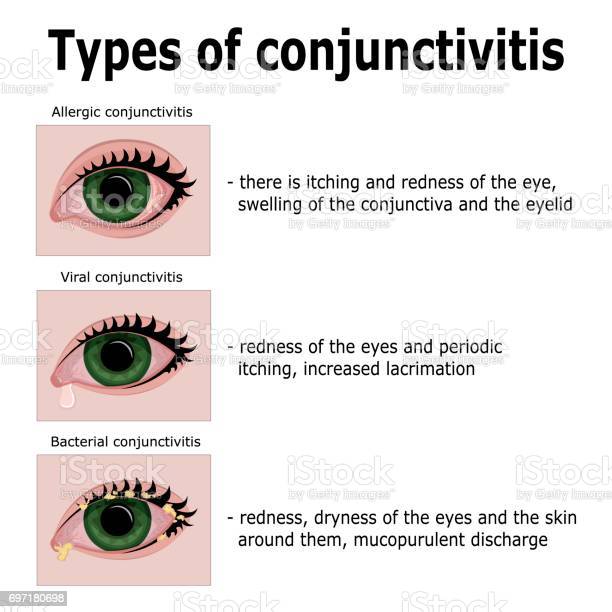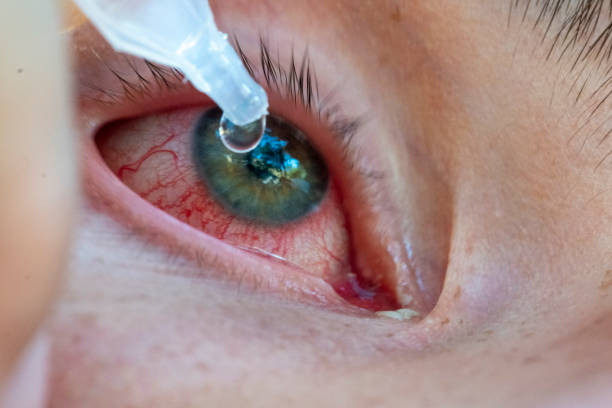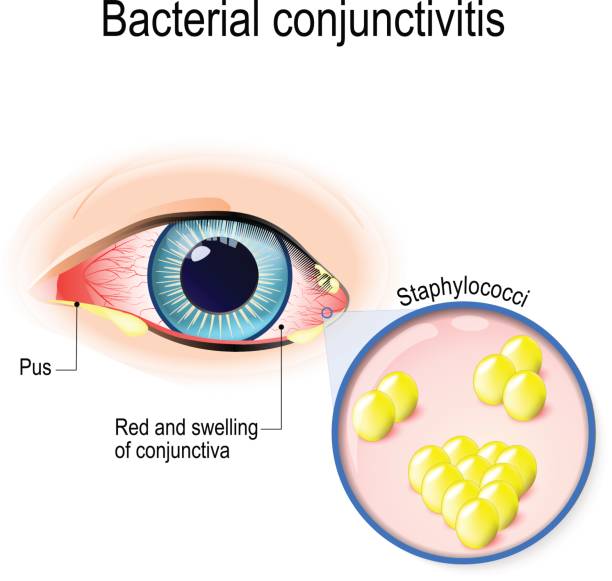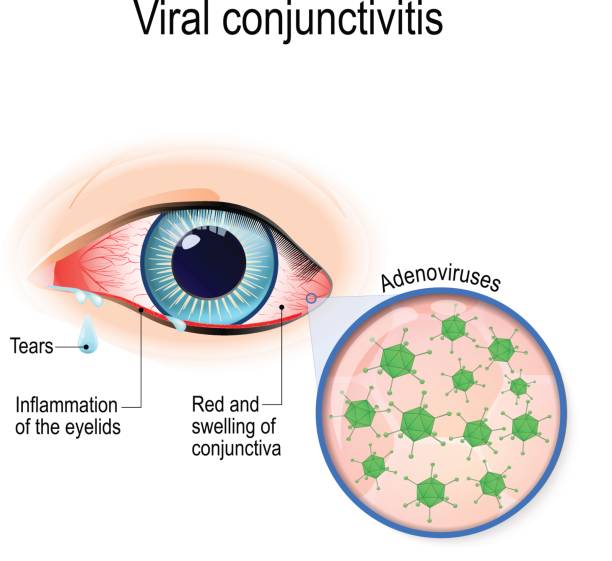Conjunctivitis, commonly referred to as pink eye, is a highly contagious and uncomfortable condition that can affect both adults and children. It is important to take immediate action to treat conjunctivitis in order to reduce the risk of it spreading to others. This comprehensive guide will provide you with all the information you need to understand and treat conjunctivitis. From identifying the signs and symptoms, to understanding the causes and treatments, this guide will cover it all. With this guide, you will be able to get yourself or your loved ones on the path to recovery quickly and safely.
What is conjunctivitis?
Conjunctivitis is an infection of the conjunctiva, the mucosal membrane that lines the inside of the eyelids and the white portion of the eye and also the outside of the membranes that cover the front of the eyeball. It is sometimes referred to as ‘pink eye’ due to the tissue’s reddish-pink color. It is not an infection of the retina, the inside of the eyeball, or the four layers of the eye that make up the ‘white’ of the eye (sclera), nor is it an infection of the eyelashes. Conjunctivitis is not a single disease, but several types of eye infections that cause redness, discomfort, and/or eye discharge. It is commonly caused by a bacterial infection but can also result from allergies or a viral infection.
Reference Source
Signs and symptoms of conjunctivitis
The infection will typically present itself in one or more of the following ways -
- Watery eyes - A mild irritation of the eyes, often accompanied by the feeling of having something in your eye, may be the first sign of pink eye. This irritation is caused by a thin, watery discharge that flows from your eyes.
- Redness - Your eyes may also become red and feel scratchy and painful. This is usually accompanied by a mild sensitivity to light.
- Discharge - A sticky or gooey discharge may also be present. This is due to the eye’s attempt to fight the infection by flushing out the bacteria.
- Headache - The infection may also trigger headaches due to the inflammation and irritation of the eye muscles.
- Swollen eyelids - The eyelids may swell and redden as the infection spreads to the eyelids.
- Extreme sensitivity to light - Unlike the mild sensitivity experienced by many people, this is extreme and can be painful.

image source
There are several types of conjunctivitis, including:
- Bacterial conjunctivitis - This type of conjunctivitis is caused by bacteria, more specifically staphylococcus or streptococcus bacteria. It is highly contagious and spreads via direct contact with the affected eye or by touching something that has the bacteria on it and then touching the eye with unwashed hands.
- Viral conjunctivitis - This type of conjunctivitis is caused by a virus such as the adenovirus or the herpes simplex virus (HSV). Viral conjunctivitis is not contagious, but bacterial conjunctivitis can be spread when one person touches an object that is contaminated with bacteria and then touches their eyes.
- Allergic conjunctivitis - This type of conjunctivitis develops when your immune system reacts to an allergen, such as pollen, dust, pet dander, smoke, or certain chemicals.
Treating conjunctivitis
Treatment for bacterial conjunctivitis will vary depending on the severity. If you have a mild case, your doctor may recommend antibiotics to treat the bacteria. If you have a moderate case, your doctor may recommend conjunctivitis drops, which are more effective than antibiotics for treating this type of infection. If your case is severe, your doctor may recommend a one-week course of antibiotics. If you suspect that you have viral conjunctivitis or allergic conjunctivitis, there are several things you can do to manage your symptoms. For viral conjunctivitis, medication is not recommended since it will not help the symptoms and may only prolong the infection. Instead, the affected eye should be kept clean to avoid irritation and irritation to the other eye. Blinking often, using a clean cloth and saline solution, wearing shades, and sleeping with your eyes closed are recommended for people with viral conjunctivitis.
Home remedies for conjunctivitis
- Stay hydrated - Drinking plenty of water is the best way to stay hydrated and will help reduce the severity of your symptoms if you have conjunctivitis. You should aim to drink at least eight glasses of water every day.
- Use cool compresses - Applying a cool compress or a cold compress to your eyes may help relieve pain, swelling, and inflammation. You can also try soaking a clean cloth in cold water, wringing it out, and placing it on your closed eyelids.
- Try eye drops - If your doctor has prescribed antibiotics or you have an allergic reaction, you will need eye drops to flush out the infection and reduce the swelling.
Prevention of conjunctivitis
Preventing bacterial conjunctivitis is easy, just make sure to wash your hands often to avoid passing the bacteria from one person to another. Viral conjunctivitis cannot be prevented, but you can reduce the risk of transmitting the infection by cleaning the hands often, not sharing eye makeup, and not touching your eyes. Allergic conjunctivitis can be prevented by avoiding allergens. If you have a child who has conjunctivitis, it is important to keep the child home from school and other activities until the symptoms have cleared up. This will help you avoid spreading the infection to others.
When to see a doctor
If your symptoms don’t go away within a week, you should see your doctor. If your symptoms become more severe (such as blurred vision or excessive pain), or if you develop a rash, you should see your doctor right away. Also, see your doctor if symptoms begin suddenly (within a day or two), or if you have a pre-existing eye condition, such as allergies or diabetes. If you go to the doctor, they will likely prescribe antibiotics in addition to warm compresses and eye drops. They will also test your bacteria to see if it is a staph or strep infection. If it is a staph infection, your doctor will likely prescribe you an antibiotic ointment such as erythromycin, bacitracin, or neomycin. If it is a strep infection, the doctor will prescribe you an antibiotic such as Augmentin, Zithromax, or Bactrim.
Complications of conjunctivitis
Complications of conjunctivitis can occur when the infection spreads to the inside of the eyelid or the inside of the eyeball. The symptoms of an infection inside the eyelid include burning, redness, swelling, and itchiness. An infection inside the eyeball is difficult to detect and is likely only to be found when the patient has a comprehensive eye exam. Eye infections can be serious and may even require surgery. One complication of bacterial conjunctivitis can be a bacterial corneal infection, which is rare but serious. A corneal infection can result in a thick, yellowish-white coating on the surface of the eye, blurry vision, and pain. Viral conjunctivitis has not been known to cause corneal infections, but bacterial conjunctivitis can.
FAQs about conjunctivitis
- Is pink eye contagious? - Yes, pink eye is highly contagious and can be spread through direct contact with the infected person, or through shared items such as towels and washcloths.
- How long does pink eye last? - Pink eye can last from a few days to a few weeks and may last longer in patients who have weakened immune systems.
- Can pink eye be treated at home? - Yes, most mild cases of pink eye can be treated at home with over-the-counter eye drops, rest, and plenty of water.
- Is pink eye caused by allergies? - There are several types of conjunctivitis, including bacterial and viral, which may be caused by allergies.
Conclusion
Conjunctivitis is a very common condition and can be caused by bacteria, a virus, or an allergic reaction. Although it usually clears up within a few days, it is important to visit your doctor if your symptoms worsen or do not improve. Treatment for conjunctivitis includes over-the-counter eye drops, rest, and plenty of water. In more serious cases, antibiotics may be prescribed to treat bacterial conjunctivitis and antiviral medications may be used to treat viral conjunctivitis.
Reference:
https://www.mayoclinic.org/diseases-conditions/pink-eye/symptoms-causes/syc-20376355
https://www.webmd.com/eye-health/eye-health-conjunctivitis
https://www.nhs.uk/conditions/conjunctivitis/
https://www.medicalnewstoday.com/articles/324487
https://en.m.wikipedia.org/wiki/Conjunctivitis



It really looks like what we call apollo here, I wonder if it is or if it is just similar, thanks for the knowledge shared friend.
You are most welcome dear
Apollo is just one type of the conjunctivitis condition, it viral and comes with its own signs and symptoms but yes all conjunctivitis are similar in a way and the differentials are best done by a health practitioners, an optometrist, ophthalmologist or an ophthalmic nurse
Conjunctivitis is not always infectious and so we cannot say it is an infection of the eye however we can say it is an inflammatory condition much like the name suggests, one could have sterile conjunctivitis without and viral, bacterial or protozoan involvement, a typical case in seen in allergic conjunctivitis where the same redness and tearing is experience and yet still the eye would be sterile in that sense.
I say in that sense because our eyes have basal microbes living on it in the majority of the population though and these innocuous microbes can become obnoxious when the opportunity presents itself especially when the immune system becomes depressed. Great and intricate writeup, thanks for sharing